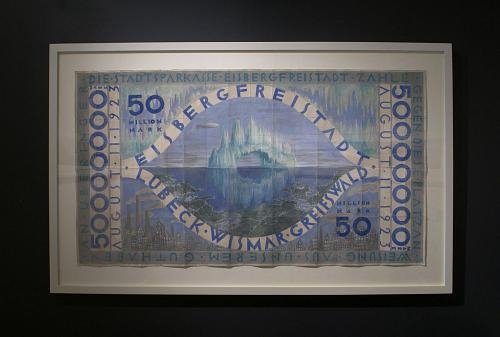Two exhibitions
dal 17/7/2009 al 21/8/2009
Segnalato da
17/7/2009
Two exhibitions
Kopeikin Gallery (new location), Los Angeles
The work Eisberfreistadt by Kahn/Selesnick was conceived from the historical and often overlooked 1923 incident in which an iceberg drifted into the Baltic sea and ran aground off the German port of Lubeck. Edgar Martins photographs the beaches bordering cities in Portugal and Iceland creating flattened and timeless images.

The Kopeikin Gallery is pleased to present two wonderful exhibitions opening on
Saturday, July 18th with a reception from 6:00 to 9:00. The Gallery will feature
the fourth exhibition by long time collaborators Nicholas Kahn and Richard
Selesnick.The
exhibition, titled "Eisbergfreistadt," is their most recent project. The second
exhibition is by Portugese photographer Edgar Martins, whose recent project is titled
"The Accidental Theorist." These exhibitions will continue through August 22nd.
The gallery will be closed from August 23rd through September 8th.
Kahn & Selesnick
Eisberfreistadt was conceived from the historical and often overlooked 1923 incident
in which an iceberg drifted into the Baltic sea and ran aground off the German port
of Lübeck. These images are true to the K/S style and are staged in real locations,
re-living this historical experience using both costumed people, props, and miniature
scenic models. These images, allow the viewer to participate in this bizarre, unknown,
historical event within our contemporary framework. Looking at these large-scale
panoramic images, we are drawn into a semi-ficticious world created by the artists,
given very few clues about the actual event itself and forced to discern the line
between fact and fiction. As Antoinette LeFarge states: "At the same time, I would
argue that actualizing a fiction through objects and other entities removes that
project from the realm of pure fiction. It is notable that the Eisbergfreistadt
project (unlike some of Kahn and Selesnick's earlier work) includes almost no
explicit,
written narrative, apart from a single newspaper clipping. Most of the narrative
must be inferred by the viewer based on her prior knowledge of history, geography,
and art."
Edgar Martins
Martins photographs the beaches bordering cities in Portugal and Iceland creating
flattened and timeless images. As he explains: "These nighttime beach images are
all about temporal experience - there is a kind of theatricality to them, a sense
of observing an abandoned stage, or a stage awaiting some event." These moments
bring the viewer to another world, yet he does not manipulate or stage any of his
photographs. While these images convey a sense of solitude and emptiness, the manner
in which they are composed fills the viewer with a sense of calm rather than
abandonment.
Nostalgic props of an imminent event or one in the recent past are also an important
aspect of the work in this series. As a result of his positioning of the camera
and use of natural ambient light, life size objects can seem miniscule. He plays
with the notion of scale and composition to confuse the viewer, not knowing whether
we are viewing an inhabitable space or simply model created in its form. Even though
the figures and subjects of these images appear to be contrived and manipulated
for the scene, they are almost all found by the artist.
Kopeikin Gallery
8810 Melrose Avenue - Los Angeles
Tuesday through Saturday from 11:00 - 5:00
Free admission



